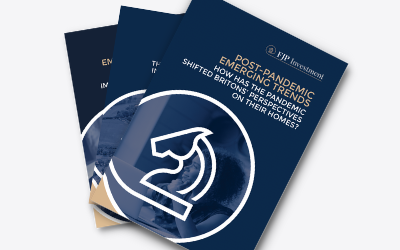Understanding the Basics of Conveyancing
Conveyancing is the legal mechanism that facilitates the transfer of property ownership between parties. While it sounds straightforward, the process is laden with complexities that can befuddle even seasoned property buyers. If you’re situated in the UK and considering a property purchase, familiarising yourself with conveyancing is essential. It becomes all the more crucial to understand the steps involved and the nuances that might impact your transaction.
In essence, conveyancing ensures that both the buyer and seller fulfil their legal obligations, safeguarding the interests of both parties throughout this significant undertaking. From property searches to contract exchanges, the steps involved in conveyancing are vital to a seamless property buying experience.
Choosing the Right Conveyancer
Selecting a suitable conveyancer can often feel like a daunting task, reminiscent of searching for the right estate agent. With the myriad of options available, it’s essential to differentiate between those who can efficiently manage your transaction and those who may not meet your specific needs.
When considering a conveyancer, begin with research. Examine their qualifications, reputation, and reviews from previous clients. While it might be tempting to choose an agent recommended by your estate agent, this can lead to a misalignment of interests. The best choice for your transaction might not be the one flagged by an agent; it’s beneficial to dig deeper to find a professional who resonates with your expectations and priorities.
Once you’ve made your choice, the next steps in the process can begin. This decision is critical as the right conveyancer will help streamline your property acquisition journey, ensuring that all legal stipulations are adhered to effectively.

Step-by-Step Guide to Conveyancing
Now that you’ve selected a conveyancer, it’s time to delve into the step-by-step conveyancing process. Understanding each stage empowers you and prepares you for what lies ahead.
Instructing Your Conveyancer: The first step is instructing your chosen conveyancer. Essentially, this means you are officially hiring them to handle the legal aspects of your property purchase. It’s advisable to have your conveyancer lined up before you make an offer on a property. This can expedite your purchase and reduces the risk of being gazumped—where a seller accepts a higher offer from another buyer after already agreeing to yours.
Initial Documentation and Searches: Once you have instructed your conveyancer, they will provide a welcome pack detailing their fees and terms. This pack will also contain requests for documentation such as proof of identification and evidence of funds. Completing and returning this documentation promptly is crucial; delays in providing information are among the primary reasons for holdups in property transactions.
Making an Offer: After you’ve found your dream home and had your offer accepted, it’s time to inform your conveyancer. Provide them with specific queries you may have about the property, such as any alterations or conveyance conditions. It’s also prudent to request that the seller take their property off the market to solidify the agreement.
Setting a Provisional Completion Date: While it may feel a bit early to discuss completion, setting expectations can aid in reducing uncertainty. Having a provisional date in mind helps keep the process anchored and can motivate all parties to stay on track.
Drafting the Contract and Ordering Searches: At this point, your conveyancer will reach out to the seller’s solicitor for the draft contract and legal pack. They will also initiate property searches that reveal any fundamental issues like planning applications or rights of way affecting the property.
Reviewing Responses and Search Results: Once your conveyancer receives the search results and seller’s legal pack, they will evaluate any pertinent details. This back-and-forth inquiry process can take time, but it is key to ensuring that everything checks out to your satisfaction.
Receiving the Conveyancing Report: When your conveyancer is content with the investigations, they will compile a comprehensive report detailing all aspects related to the property and the impending ownership transfer. It’s essential to read this report thoroughly and clarify any doubts with your conveyancer.
Finalising Your Mortgage: With details in line, this stage involves finalising your mortgage arrangements. Share the necessary details with your conveyancer, who will then verify the mortgage offer and prepare for the fund transfer on completion day.
Document Review and Signing: After addressing all questions and concerns, it’s time to review and sign the documentation. Don’t hesitate to voice any lingering queries; it’s still your right to ensure complete clarity before progressing.
Depositing Required Funds: To proceed to the next phase, your conveyancer must receive your deposit. This is a critical piece of the puzzle for the contract exchange.
Agreeing on a Completion Date: Your conveyancer will coordinate with the seller’s solicitor to fix a date for completion. It’s also advisable to arrange buildings insurance for your new property at this stage, as it will be a requirement before you can proceed with the exchange.
Exchanging Contracts: The moment of truth arrives when the contracts are exchanged. This procedure is usually conducted via a recorded communication between your conveyancer and the seller’s solicitor. It’s a significant milestone because once contracts are exchanged, neither party can back out without facing penalties.
Receiving the Completion Statement: Following the contract exchange, your conveyancer will send out a completion statement. This document outlines all of the financial requirements that need to be addressed before the completion day arrives. Ensure your funds are cleared beforehand to avoid any last-minute complications. Alongside this, you will be required to sign a mortgage deed, which authorises the transfer of funds for the sale.
Completion: On the agreed completion date, your conveyancer will obtain the signed TR1 form from the seller, allowing them to proceed with the transfer of funds. Once the funds have been sent and received, the sellers’ solicitor will notify the estate agent to release the keys. Congratulations! You are officially a property owner.
Post-Completion Responsibilities: Even after you’ve received your keys and started to settle in, your conveyancer’s work continues. They will handle the payment of any stamp duty owed to HM Revenue and Customs, register you as the new owner with the Land Registry, and ensure the title deeds reflect your ownership. Title deeds typically arrive within three weeks of completion, but they will be held by your mortgage lender until the mortgage is fully repaid.
Understanding this step-by-step guide can greatly enhance your experience when purchasing property in the UK. While the process can be intricate, being well-informed can help mitigate stress and ensure all aspects are handled proficiently.

Anticipating Challenges in the Process
Along your conveyancing journey, be prepared to encounter potential challenges that might arise. Delays during contract exchanges are common due to outstanding documentation or unresolved queries from property searches. These hold-ups can test your patience, but a competent conveyancer will keep you informed and act swiftly to address any issues.
Another challenge is the possibility of gazumping, where a seller takes a higher offer from another interested party after you’ve already made an accepted offer. This frustrating occurrence is a risk inherent in competitive markets, where emotions can run high. While there is no foolproof way to prevent gazumping, remaining proactive and having your conveyancer ready before making offers can help protect your interests.
Additionally, legal intricacies such as leasehold clauses or shared ownership agreements may introduce complications. These aspects necessitate careful examination and expertise. Here, having a knowledgeable conveyancer on your side is invaluable. They can quickly identify and navigate any potential issues, ensuring you understand your rights and responsibilities before proceeding.
Conclusion
Overall, grasping the complexities of conveyancing will empower you as you engage in the property buying process. Each stage plays a pivotal role in securing not just a property, but a significant investment in your future. By understanding the steps involved, from choosing the right conveyancer to managing the legalities, you put yourself in a position to make informed decisions.
This knowledge not only fosters confidence but can also lead to a smoother experience overall. Remember, a diligent and experienced conveyancer is irreplaceable; they provide a lifeline through the legal labyrinth of property transactions.
As you embark on your journey of property ownership—whether buying your first home, investing in rental properties, or upgrading to your dream residence—be proactive, ask questions, and ensure clarity at every stage. The foundations you lay now will serve as a strong base for your future in the property market. Embrace the journey, and take your time, because your new property adventure starts here.
ARE YOU READY TO START INVESTING?
Subscribe to our mailing list now for exclusive deals, investment guides and the latest information from the property market.







